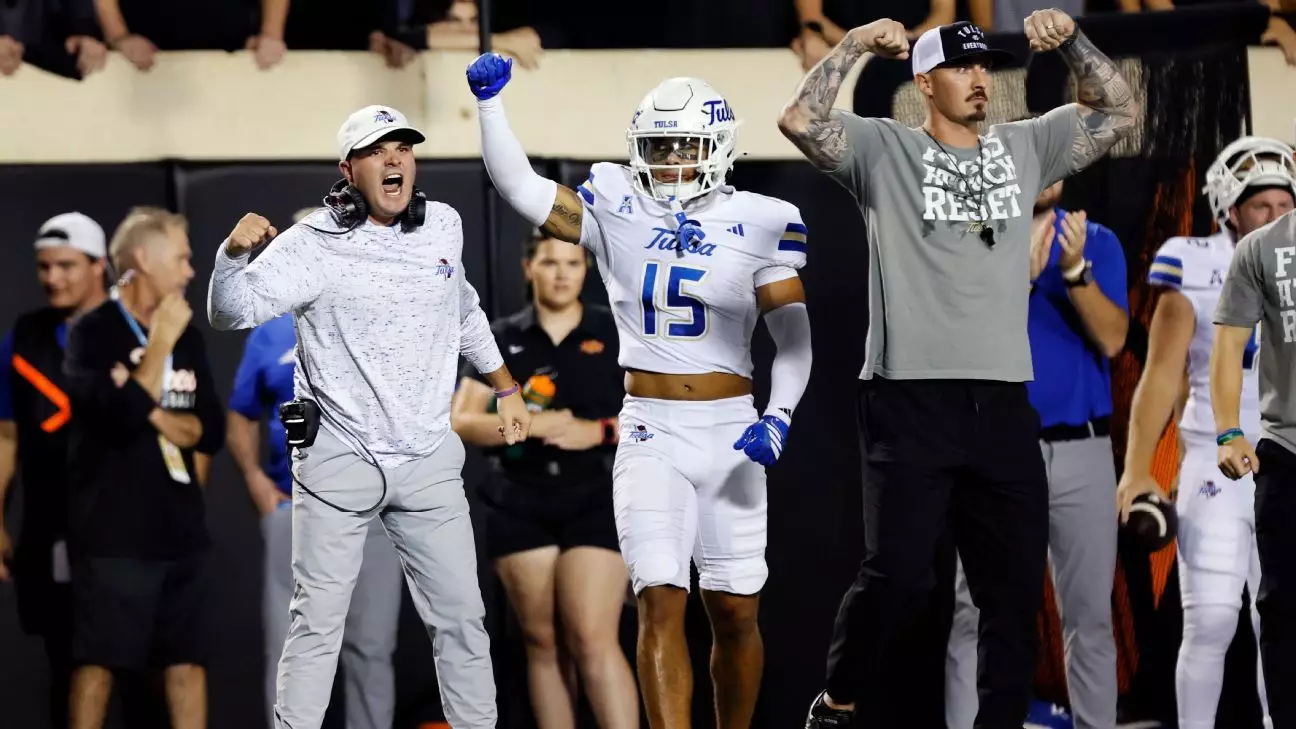In an era where college football is often viewed as a reflection of a program’s integrity and resilience, Oklahoma State’s recent performance paints a stark picture of decline and lost potential. What was once a promising team, often seen as a solid contender in the Big 12, now appears mired in confusion and mediocrity. The disturbing reality is that the Cowboys are embroiled in a relentless downward spiral, marked by poor coaching decisions, lackluster execution, and a palpable loss of institutional confidence. The recent loss to Tulsa, a team that hadn’t beaten Oklahoma State in over half a century, is not just a statistical upset—it serves as a symbolic indictment of how far the program has fallen.
The defeat magnifies the underlying issues of complacency and mismanagement that have subtly, but surely, eroded the team’s foundation. Despite the coaching staff’s efforts, it’s evident that some strategic flaws have persisted across seasons. The inability to adapt defensively and the failure to inspire a cohesive offensive unit reveal systemic problems that no amount of workout drills or motivational speeches seem to fix. The team’s performance highlights a broader problem: when a program’s leadership stumbles, the repercussions ripple throughout every department, affecting morale, fan support, and recruitment.
Coaching Crisis and Leadership Failures
One cannot discuss Oklahoma State’s recent struggles without scrutinizing their coaching staff, particularly head coach Mike Gundy. His tenure has been characterized by moments of brilliance and troubling stretches of collapse. However, the current state of affairs suggests that Gundy’s once formidable masterclass in player development and game management is now wearing thin. The team coming off a catastrophic blowout against Oregon exposed vulnerabilities that have yet to be addressed, and the subsequent defeat to Tulsa signifies a deeper leadership crisis.
The coaching woes are compounded by misjudged game strategies and a lack of innovative adaptation. Despite Gundy’s long tenure, his team appears to lack a clear identity—an essential trait for any successful football program. His admission that Tulsa outcoached the Cowboys early in the game serves as a damning indictment of preparation and strategic planning. It reveals a failure to match an opponent’s game plan and an inability to motivate the players to execute under pressure. When leadership falters at this level, it’s only a matter of time before morale and recruitment suffer. Oklahoma State’s reputation as a powerhouse is tarnished when it cannot hold its own against teams with less historical prestige.
The Erosion of Competitiveness and Morale
The team’s recent performance underscores how fragile confidence can be once tactical flaws surface frequently. It is evident that players like Zane Flores and Gavin Freeman are working hard, but the team as a whole appears disconnected from its potential. The emotional and mental toll of consecutive losses, especially against lesser opponents like Tulsa, can be devastating for student-athletes who once believed in the program’s promise. Losing streaks—like Oklahoma State’s record when coming off a loss—are not mere statistics; they serve as indicators of a deeper malaise that infects every aspect of the team’s culture.
Additionally, the once formidable home-field advantage at Stillwater is eroding, turning into a battleground of frustration rather than pride. Fans, long known for their loyalty and passion, are beginning to question whether the program can reclaim its former standing. The failure to close out games and the inability to translate promising drives into points further expose weaknesses in game execution and mental toughness. This is particularly concerning for a program that prides itself on resilience and hard-nosed football. Instead, what fans see is a shell of what once represented grit and tenacity.
A Call for Reckoning, Not Excuses
The current state of Oklahoma State’s football fortunes should serve as a wake-up call for the administration and coaching staff. A team cannot rely solely on tradition or reputation; it must adapt, innovate, and invest in player development and strategic planning. Failing to do so diminishes the very essence of college sports—growth, opportunity, and the pursuit of excellence. The program must critically evaluate its resources, recruit with purpose, and foster a culture where accountability is paramount.
Ultimately, the Oklahoma State situation exemplifies how fragile success can be when leadership falters. If the powers that be continue down their current path without meaningful change, the program risks further erosion of its standing—not just within the conference but nationally. The recent loss to Tulsa isn’t merely a hiccup; it’s a mirror reflecting deeper issues that demand urgent attention and courageous restructuring. Without such action, Oklahoma State risks becoming a symbol of lost potential, a program that once dared to dream big but now is haunted by its own failures.

